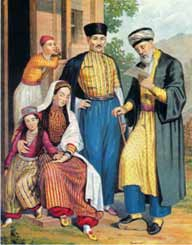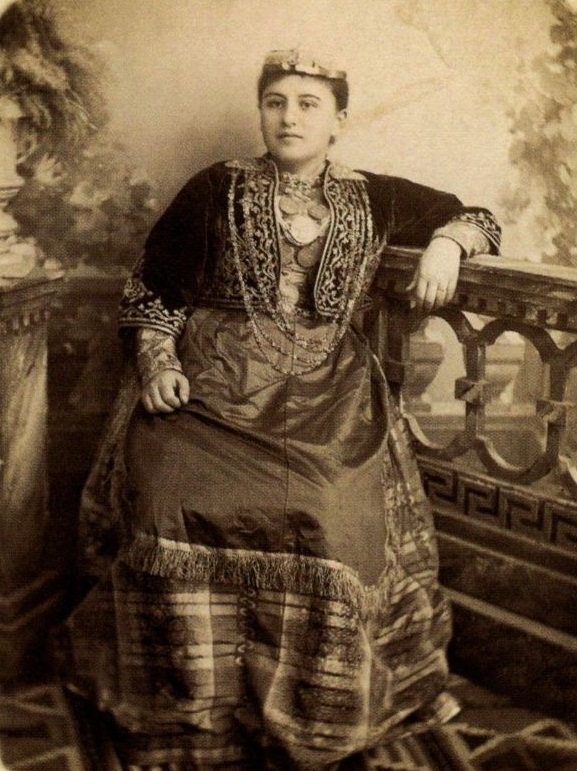



The greatly reduced Khazar kingdom in Tauris, the survival of a mighty empire, was able to hold its own for nearly half a century, until in the eleventh century it fell a prey to the Russians and Byzantines (1016). The relatives of the last khagan fled, according to tradition, to their coreligionists in Spain. The Khazar nation was scattered, and was subsequently lost among the other nations. The remnants of the Khazars in the Crimea who professed Judaism were in all likelihood merged with the native Jews, consisting partly of Rabbanites and partly of Karaites / Karaims. In this way the ancient Jewish settlements on the Crimean Peninsula suddenly received a large increase. At the same time the influx of Jewish immigrants, who, together with the Greeks, moved from Byzantium towards the northern shores of the Black Sea, continued as theretofore, the greater part of these immigrants consisting of Karaites, who were found in large numbers in the Byzantine Empire.
Beginning with 1428, the old Karaite / Karaim community of Chufut-Kale ("the Eock of the Jews"), situated near the new Tatar capital, Bakhchi-Sarai, grows in numbers and influence. The memory of this community is perpetuated by a huge number of tombstones, ranging from the thirteenth to the eighteenth century. Crimea, now peopled with Jews, sends forth settlers to Lithuania, where, at the end of the fourteenth century, Grand Duke Vitovt * takes them under his protection. Crimean colonies spring up in the Lithuanian towns of Troki and Lutzk, which, as will be seen later, are granted extensive privileges by the ruler of the land.
On the picture above may be the most eminent Karaite scholar of the 19th century, and the most active champion of the Karaite struggle for civil rights Abraham b. Samuel Firkovich (1787–1874) whose advent upon the scene opened a new chapter in Karaite historiography. In the 17th and 19th centuries, Karaite activity shifted to the Crimea and Lithuania, and Karaites in these areas assumed leadership of the sect. In 1835 Karaites succeeded in having the Rabbanite Jews of Troki expelled from the town, on the basis of ancient Lithuanian privileges which granted them the sole right of settlement there. They also achieved a change in their official designation; instead of "Jews-Karaites" they first came to be called "Russian Karaites of the Old Testament Faith," and eventually simply "Karaites." Number of Karaites in Russia: according to official figures, their number (including all areas of former Poland and Lithuania) had grown to 9,725 in 1879) [ENCYCLOPAEDIA JUDAICA, Second Edition, Volume 11].